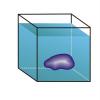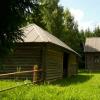Do-it-yourself blind area made of broken bricks. Proper foundation blind area means long life of the house. Requirements for the blind area and rules for its construction
The work is not limited to just the construction of a private house. It will be necessary to make some efforts to arrange the home so that it is as reliable, comfortable and durable as possible. One of the main stages, carried out after the completion of the main construction work, is the creation of a blind area around the house. This element performs a number of important functions. If you wish, you can make a blind area with your own hands; there is nothing super complicated about it.

Some homeowners ignore the need to build a blind area. And absolutely in vain! This building element helps to increase the service life of the building and generally creates more comfortable living conditions. The blind area protects the foundation and the surrounding land from harmful effects various kinds water. Atmospheric and melt water, in the absence of obstacles, can erode the soil so much that moisture seeps into the foundation and then into its base. The consequences of such an impact can be very severe, including destruction of the foundation and the house.


Thus, the blind area is very important element, especially if the house is built on a shallow foundation, the base of which is located close to the top layer of soil. When wet, the sole of the base will lose its strength and begin to sag, which will lead to a significant decrease in strength concrete structure, right up to its destruction.


But even if the house is built on a strong, buried foundation, the need for a blind area cannot be ignored. It must be present in any case, regardless of the type of foundation, soil and level of precipitation characteristic of a particular region, etc.
Preparing to create a blind area around the house
There is nothing complicated about constructing a blind area yourself; you just need to take into account and follow the basic recommendations in order to get the most reliable and durable building. It is first necessary to prepare materials and understand the main stages of the technology.
Selecting the width of the blind area


Choose the appropriate width of the structure. Since the “shoulders” of this structure bear the function of protecting the foundation of the structure, the width of the fill should be quite large. To reduce the risk of foundation destruction under the influence of moisture, it is worth taking care to drain water from the walls of the building to the greatest possible distance. The optimal width of the blind area is at least 80 cm.


Quite often, the blind area is made so wide that it simultaneously serves as a convenient path. This point also needs to be taken into account at the stage of planning the blind area, so that in the future you do not have to move sideways along such a path. Thus, the most convenient width of the blind area, which can provide both reliable protection, and freedom of movement, is 150-250 cm.


The blind area is carried out with a certain slope, which can ensure the drainage of rain and melt water from the house. According to building codes per 100 cm of structure width there should be at least 5-10 cm of slope. Thus, if the blind area is, for example, 100 cm wide, then the edge that joins the wall of the house will rise by 5-10 cm, and opposite side will be flush with the ground.


Such a descent is quite sufficient to effectively drain water from the building. However, it is difficult to move around such a structure. But if you reduce the angle of inclination, the flow of liquid will not be as effective. In view of this, the slope is made at a level of 1.5 cm per 100 cm of the width of the structure. This is the optimal value, which does not interfere with walking along the path and promotes effective moisture removal.
Materials for the installation of a blind area
The independent construction of the design in question requires the presence of certain devices. The list of materials may vary depending on the selected type of blind area. The most common option is concrete construction.


First you need to clean the area for the blind area, lay a reinforcing mesh of rods with a diameter of at least 6 mm, connect the rods with a special binding wire, install the formwork and pour the concrete solution. This is the general scheme. However, each stage has its own characteristics and requires separate consideration.


Set for pouring blind area
- Shovel for digging a trench.
- Level.
- Wheelbarrow.
- Manual tamping.
- Materials for moisture insulation.
- Material for thermal insulation.
- Clay.
- Crushed stone.
- Sand.
- Reinforcing bars or finished design with cells 100x100 mm.
Remove everything from the walls of the house that could interfere with the work, collect the devices listed above and start marking. For this step you will need some rope and metal pegs. When creating markings, make sure that the structure has the same width in all places.
Guide to pouring a blind area
The blind area makes a big contribution to the durability of the foundation, so its creation must be approached with maximum responsibility.


The structure consists of an underlying and top layers. The first is responsible for creating an even, compacted base for the next layer. It is created from sand and small gravel. The total thickness of the layer is about 2 cm. You can also use clay. When choosing a specific bedding material, focus on the material of the top layer.
The top layer is designed to create water resistance and increase the resistance of the structure to water. Can be created from small cobblestones, clay, concrete and other materials. The thickness of such a layer is about 10 cm.
The instructions will discuss the procedure for arranging the most popular type of blind area - concrete. Having dealt with its construction, you can make a blind area from any other materials suitable for this purpose without any problems.
How to make a blind area with your own hands. Digging trenches and erecting formwork

The technology for arranging a blind area around the house requires mandatory reinforcement. Thanks to the reinforcing mesh, the rigidity and durability of the concrete structure will be increased. As noted, you can buy a ready-made mesh or assemble it yourself from metal rods. Cells with a side of 10 cm are considered optimal.


Special attention must be paid to the expansion joint. It is created at the junction of the basement of the house with the blind area. Due to such a seam, protection of the mentioned structures will be ensured during the process of soil subsidence. That is, the blind area will be able to sink along the seam without causing damage to the base of the house. The standard seam width is 1-1.5 cm. The seam must be filled with roofing felt, sand-gravel mixture or bitumen of your choice.


You can also use a special rope for filling, the manufacture of which uses foamed polyethylene.
It is important that the diameter of this harness is approximately? exceeded the width of the expansion joint and fit into the gap as tightly as possible. For more convenient compaction of the bundle, take plywood or other similar material.
The technology for constructing a blind area requires that seams be present across the concrete structure, approximately every 200-300 cm. They will protect the blind area from ruptures during frosts. It is most convenient to make transverse seams using wooden slats. It is enough just to install the slats so that their top is located at the same level as the upper border concrete pouring. Also, expansion joints must be present in the corners of the building. Don't forget to take into account the slope of the blind area.
To protect the slats from rotting, they must be pre-treated bitumen mastic, waste oil or other similar material. Also, expansion joints must be present in the corners of the building.
Concrete for blind area. Preparation and pouring
Concrete is prepared from 1 part cement (it is best to use the M400 grade material or the less expensive M500), two parts sand and four parts crushed stone.
After pouring, the concrete must be compacted and leveled. Wood slats, previously used to create transverse expansion joints, will simultaneously perform the functions of beacons by which you can navigate while working.


After pouring is completed, the concrete should be covered with a cloth; burlap is ideal. The cloth should be regularly moistened with water to prevent the concrete from drying out and cracking.
In the end, all that remains is to wait until the concrete gains strength. On average, this takes 1 month. If desired, you can complete the finishing lining of the blind area. Acid-resistant bricks are perfect for this.
Thus, there is nothing complicated about pouring the blind area around the house yourself. Just follow the instructions you received and everything will work out.


Happy work!
Video - DIY blind area around the house
The blind area of the house is one of important aspects in creating long and comfortable operation of the house itself. It creates protection for the foundation and soil around the circumference from moisture. After intense rain or snowfall, or melting snow, water may accumulate near the building. It can also drain from the roof. Moisture can have a damaging effect on top layer soil and get to the foundation. If this happens, the bearing potential of the foundation will be seriously weakened. As a result, the entire structure may collapse.
When creating a drain, creating a blind area is mandatory. The drain will protect the soil from water coming from the roof, but will not protect it from precipitation.
It is extremely important to properly build a blind area when you have a shallow foundation. Its sole is quite close to the surface, and water can reach its very depth without any problems. Then the strength of the sole will disappear, the sole itself will sag, and the foundation will lose its shape and begin to collapse.
A blind area should also be created with a built-in buried foundation.
To create a strong, durable blind area, you will need to choose the right materials High Quality and strictly adhere to the technological aspects of construction.

Tile blind area.
Determining the width of the blind area
The main task of the blind area is protection. And its width is the parameter that should be the maximum possible. Its recommended minimum value is 80 cm. And the maximum numbers are a purely business matter. There are no standards here. The required width will ensure that moisture is absorbed into the soil far from the house.
When determining the width, it is worth considering one more task of the blind area - path around the perimeter of the building. The blind area should ensure free movement along this path: no walking sideways or close to the wall. Taking this factor into account, the width should be set in the range of 100 – 250 cm.
The blind area should be formed with a slope. This will allow water to drain away from the walls of the building. According to Soviet standards, the slope parameter is as follows: 5 – 10 cm per 100 cm width. That is, the edge of the blind area, whose width is 100 cm, will reach a height of 5–10 cm near the wall of the building. Its other edge will be flush with the ground. This results in a rather steep descent. It is optimal for fast and efficient water drainage. But moving along such a blind area will be problematic. If the angle of inclination is reduced, the flow rate will drop significantly, and water may generally accumulate on the surface. Although movement along the blind area will be comfortable.
Provided the surface of the blind area is ideal (flatness, smoothness), a slope of 1 cm is acceptable. However, such a surface will be difficult to move in winter - it is very slippery.
If a material with a rough surface is used for the assigned tasks, the minimum tilt value is 1.5 - 2 cm.
When a blind area is created around a non-residential building, for example, the recommended angle at the entrance is: 2 - 3 cm. This way the surface will receive high-quality protection from rainwater. It will quickly drain, without penetrating into it and not freezing in the cold. And your garage will not have puddles and ice.
Selection of materials
This task should be approached extremely seriously. Exist different variants materials for creating a blind area. The most popular is considered reinforced concrete.
When using it, the work is performed according to the following algorithm:
- Clearing the site for future construction.
- Reinforcing bars (minimum diameter - 6 mm) form a mesh. Its cells are as follows: 30 x 30 cm. The cells are connected with knitting wire.
- Installation of formwork. For this, boards are used.
- Pouring formwork.
Before creating the blind area, its base is prepared: along the perimeter of the building along the width of the blind area, the upper ground layer- approximately 13 cm. At the walls, the depth should slightly exceed the specified parameter. The poured concrete mixture should flow towards the house, slightly compressing it. Any other fastenings of the blind area to the building are not necessary.
Then they are marked boundaries of the blind area. The pegs come into play. They are driven in. A cord runs between them. The bottom of the trench is covered with a 5 cm layer of sand. Concrete will be placed on it.
If in work area The soil is sandy, the use of sand can be eliminated. Place on this layer formwork, reinforcement cage, concrete pouring follows. Reinforcing elements must be completely concentrated in the concrete base. To do this, the base rises a little.
Concrete is created in the following proportions:
- cement M400: 1 share,
- sand: 2 shares,
- crushed stone: 4 or 5 shares.

Concrete blind area.
Radioactive materials
If you intend to build a blind area from ash - the result of coal combustion at a thermal power plant, be vigilant. Ash can be a source of radiation. And this will have a detrimental effect on the health of residents.
As a rule, coal mining is carried out in Russian mines. There is a very high level of radiation there. Radiation checks are not carried out at thermal power plants. There important factor– ash content of coal. Therefore, by purchasing ash and using it in construction activities, you risk seriously deteriorating your health. To reduce the risk, purchase ash with a dosimeter. This device will calculate her radiation level.
Also included in the category of radiation materials is cinder block. It also contains ash. There are known cases of determining very high level radiation in residential premises made from such blocks.
It is extremely rare that increased radiation occurs near foundation blocks and reinforced concrete slabs. In construction, sawdust blocks can be used instead of cinder blocks. This option is completely environmentally friendly.
Metal can also give off radiation. This applies to both black and colored varieties. A dangerous background is most often present in melted metal. The echo of Chernobyl speaks here. A lot of metals were taken out and melted from this zone. And there is some probability that when buying a metal product for a blind area, you are acquiring an “element” of Chernobyl. When purchasing, also use a dosimeter.
Working on the covering for the blind area
After complete hardening concrete mixture You can lay a coating on it. Very often the coating is formed from figured paving elements (FEMs), or from granite paving stones.
The first ones differ in their quality and appearance. Acid-resistant bricks with dimensions of 12 x 25 x 5 cm are considered high-quality options. They cope excellently with loads from frequent movement and walking, as well as natural conditions.
Standard FEMs do not have the required strength. This negatively affects their service life. It hardly reaches 5 years. After this period, their original appearance is completely lost. Such coating should last at least 10 years.
Paving stones – great option for covering. Its strength is high, its service life is decent, and it has a rich color range. It can be used as a mosaic and formed into intricate patterns. Her main drawback associated with its enormous price.
Coverage example

The nuances of creating a blind area around the house yourself
In this work it is worth paying attention to the following nuances:
- Don't build a blind area immediately after the construction of the basement. When backfilling is performed, the trench is filled with soil that was previously removed from it. That is, black soil, clay, etc. are used. To a certain extent, there is subsidence of any soil. It takes time for it to completely subside. If you build a blind area right away, without waiting for this subsidence, then if moisture penetrates into the soil, it will begin to sag, changing the shape of the blind area. And cracks form on its surface. To prevent such a situation, make the backfill from sand, which easily allows water to pass through. When you water it correctly and level it, the blind area can be created within 24 hours. Although it is better to start this construction after the construction of the building box or 8-12 months after work on the foundation.
- To cover Do not use porcelain tiles. It has a smooth, slippery and traumatic surface. In addition, it has a very modest service life. After all, it is laid directly on a concrete plane, which expands in cold weather. And such a coating will soon burst.
Principles of installation of FEM
For styling of this material use a mixture created from a bucket of cement (grade M400) and 3-4 buckets of sand, as well as 70 grams detergent. The last component protects the created composition from subsidence.
There is a more economical version of installation - on sand. But the service life of the coating in this situation will be short. When moisture penetrates the sand, the material will sag and will need to be re-laid or completely replaced.
Another economical option with similar characteristics is laying on a dry mixture. This way the surface will retain its pleasant appearance a little longer. Therefore, the first proposed option remains the most optimal.
Example

Creating blind area protection
As you know, the main task of the blind area is protective. But it is advisable to protect this structure itself from water coming from the roof. Here it is necessary to arrange a high-quality outlet in the format of gutters. They will be organized along the entire perimeter of the roof. This way, the water will first end up in the gutters and flow through them into the drain pipe. As a result, it will still end up on the blind area, but the height of its flow will be radically reduced. The impact on the surface of the blind area will also be reduced.
According to old standards, diversion technology was used for buildings with more than two floors. Nowadays, allotments are arranged in any private houses.
Examples:


It wouldn’t hurt to insulate the blind area additionally. This way the soil will freeze less in cold weather. For such purposes, the concrete composition is castled: instead of crushed stone, expanded clay is used.
More good technique insulation: fill the blind area in two layers, with insulation installed between them, for example.
Final requirements for the blind area:
- Optimal width for efficient drainage and comfortable walking: 1-2 m.
- The optimal slope according to the same criteria: 1.5 cm (per meter of width).
- When creating the foundation, it is necessary to dig a trench with a slight slope towards the residential building. The blind area should be in close contact with the house throughout its entire depth.
- Optimal and safe material– reinforced concrete. It guarantees excellent results in terms of strength and durability.
- The best option for coating is acid-resistant brick - FEM. It is laid on a concrete mixture.
- No matter how many floors there are in a built house, high-quality drainage is necessary. It will seriously increase the service life of the blind area.
An example of a finished blind area with drainage. 
Video instructions
Alexander Kvasha’s video on creating a blind area with your own hands is not only one of the most popular. The authors of the material did not turn off the ability to comment, so viewers were able to actively criticize the presented material and analyze errors in detail.
Blind area - a reinforced concrete belt around the foundation, carries more values than one decorative function. This is, first of all, protecting the base of the object from all kinds of seasonal manifestations and the vagaries of the soil. Before installation, it is important to understand its structure, choose the best building materials and begin work immediately after the completion of the house, thereby initially extending its service life.
What is the function of the blind area?
Monolithic foundation is subject to the destructive effects of natural factors - excess moisture, freezing, mechanical damage as a result of soil swelling. The blind area is designed to reduce manifestations to a minimum - it is impossible to get rid of the consequences completely.

Tasks reinforced belt are as follows:
- Drainage of melt, rain or flood waters from the base of the house. Short-term interaction will not harm the concrete, unlike stagnation. Without a blind area, constantly wet concrete begins to crumble, exposing the reinforcement, which, in turn, becomes covered with corrosion, and accordingly, the rigidity of the frame is lost.
- Maintaining foundation temperatures without significant drops during peak winter temperatures. The part of the foundation located underground must remain in a stable condition. This is greatly facilitated by the construction of a layer above the ground - a blind area. Even at the stage of pouring the main platform, care should be taken to insulate it.
- Stopping ground movements. Depending on the terrain and the chosen type of foundation, the object will experience stresses associated with the vagaries of the soil - shifting layers, changing the level of the aquifer, swelling or subsidence. The blind area will reduce negative manifestations.
- And, of course, decorative advantage blind areas. With her, the house looks finished. As a rule, it is lined with decorative stone, tiles, and basement siding.
It’s easy to do the work yourself, without involving expensive specialists.
Construction and calculation of the blind area
The scheme for pouring a reinforced belt around the house is simple and similar to the construction of the foundation. It consists of the following: a ditch with compacted shock-absorbing layers of sand and crushed stone, a reinforcing rod for connection with the base of the house and the strength of the concrete of the blind area, the actual pouring itself and subsequent cladding.

Technical calculations for the future diversion site are based on the following:
- The width of the concrete strip extending outside the house is calculated depending on the protrusions eaves overhangs. A minimum of 20 cm is added to their length. By designing the corresponding points, the size of the blind area is obtained.
- The depth of the ditch is determined by the shock-absorbing layers, each of which must be at least 10 cm + 20 cm for concrete below and above the ground.
- The angle of inclination of the blind area is 1.5–2 degrees. To navigate without the use of special tools, mark a point 10 cm high on the foundation and smooth it to 0 to the end of the width of the concrete strip.
- After all work is completed, the blind area is equipped with drainage - a gutter with a drain pipe going into sewer hatch or waste tray.
How to make a blind area with your own hands step by step instructions
An important condition for work is that it is carried out before the first frost + time for setting and hardening.
Tools required:
- Construction mixer. If it will be used only once, then there is no point in purchasing a factory product. In this case, it is rented. It is undesirable to mix concrete in batches, since intermittent work is fraught with delamination. Besides, it's just backbreaking work.
- Tools for earthworks- shovels, picks, crowbars.
- Level, trowel, paint brushes, spatulas.
- Containers for solution and water.
Required materials:
- Components cement mortar– amateurs are advised to purchase dry ready-made mixtures, otherwise there will be a mistake with the proportions.
- Boards for formwork, fasteners.
- Reinforcing rod or finished mesh.
- Sand and crushed stone.
- Herbicides may also be required - substances that control vegetation on the site; ridding it of moisture storage is absolutely necessary.
Soil preparation
The ditch for the blind area is dug manually. Such actions will not damage the main foundation of the house. If the platform has not yet been properly insulated and waterproofed, now there is a reason to do necessary protection. In addition, the foundation is rarely left without cladding and laying additional layers is commonplace.

Insulation and waterproofing
- Dry the base thoroughly after removing the thickness of the soil.
- The surface of the concrete is coated with molten bitumen and, without waiting for it to dry, the styrene slabs are “glued”.
- Also put on top thick layer bitumen, paying Special attention to seams and joints.
- At the junction, coating with bitumen should be carried out several times when the previous layer is completely dry. The thickness of the waterproofing material will form an expansion joint even with possible movements of the fault soil concrete surfaces won't happen.
Excavation
The ditch is compacted. For this they use special tool or wide board. The first layer to shock-absorb the structure will be sand; it will also be thoroughly compacted, having previously been moistened with water. Then crushed stone. It is better to purchase screenings - its small fractions will lie tightly, and the blind area will receive the greatest strength.
Reinforcement of the blind area
No gain, none concrete product will not withstand loads. That's why reinforced mesh or a personally cut and tied rod is placed on a crushed stone surface. For reliability, the wire for the bundle is pierced through the thickness of the mineral layers, thus securing it in the ground.

The cross-section of the formwork rod should not be less than 10 mm. And in the case of a significant height of the blind area to the foundation wall - from 12 mm. For complete unity with the common platform, a groove is selected in the walls and pieces of reinforcement are inserted inside.
The total amount of reinforcement is determined individually depending on the width and size of the blind area. If a network is used, then there is no need to be tricky with the step of installing the rods - the reinforcement is simply laid over the entire area. Individual rods are spaced at a distance of 20 cm and more often if the structure is impressive.
Formwork installation
Since the angle of inclination of the blind area is small, you should not be afraid that the thickness of the concrete will go to outside boxes - the solution is mixed plastic, but not liquid. The formwork itself consists of panels of equal height. They are installed with temporary supports - pegs - supporting the wet mass. The height of the shields must be sufficient so that the solution does not go beyond the contours. In the form of beacons, slats are placed on the edges of the formwork - they will help maintain the required filling level.
Pouring the blind area
Having determined the speed of your own work, you can start kneading in small portions. When the consistency is satisfactory, the solution is transferred into the formwork in buckets. Pour carefully, without disturbing the crushed stone layer and reinforcing mesh. To make sure that the blind area will not cause delamination, the thickness is pierced with a reinforcing rod, expelling the air. This is how all the work is done.

After complete filling, the surface is smoothed and poured over the course of a week. cold water. The appearance of white foam on concrete means that the mass has completely sunk. After this, the blind area is left alone until it sets completely.
Drainage device
A ditch is dug along the edge of the blind area and placed in it drainage trays, so that plastic or hardware were not visible along the horizon. They are covered with lids, and movement along own plot will become safe.
Can also be used PVC pipes, cut in half, however, factory-made products with perforation are comfortable and look decent. There is no need to worry about outlet pipes - only one is needed for direct discharge of wastewater into the sewer or storm drain.

It's worth thinking about electric heating trays or gutters - during periods of snowfall and ice melting, congestion from precipitation is not uncommon, which causes flooding of areas and, accordingly, the interaction of the concrete mass with moisture.
Decorative cladding
When the main work has been completed, you should think about how to adequately present the blind area structure. Most often, owners of private houses use paving slabs for this purpose. It is easy to install, has a rich palette, and is inexpensive. With it, the foundation of the house and the object itself will acquire a presentable and dignified appearance.

It is important to select a combination of tones. Ceramics, asphalt, decorative rock. Depending on your financial capabilities, you choose your own option.
A blind area is a covering that surrounds a building. Its purpose is to protect the foundation, basement or ground floor from moisture seepage.
The blind area can be made of asphalt, concrete mortar, paving stones, ceramic or paving slabs. This strip should have a slight slope away from the house. In most cases, the blind area is a convenient walking path.
If it is not built, then after a while the water will begin to flood the basement. Or in winter, frozen moisture will destroy the foundation of the building.
Features of moisture-proof coating
Most easy option there will be a concrete blind area 0.6-1 m wide. In order for it to fully fulfill its purpose, the following rules should be followed:
- The covering should not have a width equal to or less than the roof overhang. The minimum strip size is the width of the cornice plus 20 centimeters.
- The coating must be laid continuously around the entire perimeter of the building. Only in this case will the foundation, basement, and basement of the house be reliably protected from water seepage.
- The wider the coating, the better it will protect the perimeter of the house from moisture.
- The blind area should be made with a slope. It is needed for better water drainage. The minimum slope from the building towards the ground should be 1.5º. It can be made steeper, which depends on the lining of the blind area. The tilt is done at the stage of laying the underlying cushion or installing the finishing.
The duration of operation of the foundation of the house, its base or basement depends on the correctness of the construction of the blind area. If it is done correctly, then you will not have to repair these building elements for a long time.
The blind area consists of two main layers:
- Underlay pillow. Its purpose is to form a smooth and dense base for cladding. For the pillow you can use gravel, crushed stone, clay, sand. Its thickness should be about 15-20 cm. (Read how to choose the right crushed stone)
- Facing coating. It must be waterproof. The covering is actually a blind area that protects the building from water. It can be made from asphalt, concrete, paving and ceramic tiles, paving stones.
Required tools and materials
Before work you need to prepare the following:
- quartz sand;
- crushed stone or gravel;
- Portland cement grade M-400;
- polyurethane sealant for expansion joints;
- boards for formwork (their width should be equal to the total thickness of the protective strip);
- trowel and wide spatula;
- rule for leveling concrete;
- trough for preparing the solution;
- bubble level;
- Soviet and bayonet shovel for earthen and concrete works.
How to independently arrange a blind area around the house: step-by-step instructions
So how to do it concrete blind area. Initially, it is necessary to mark it. For this purpose, it is necessary to postpone external walls at home 1 meter, drive in stakes and pull a cord along them.

Next, follow the markings and remove the soil. Here you need to take into account what the cover of the protective strip will be. For a blind area made of concrete mortar, a trench 0.2-0.25 meters deep is required. When you dig it, compact the bottom of the ditch using a tamper.
Construction of formwork
The formwork prevents the concrete mixture from spreading and forms its configuration. It’s quite simple to assemble, you don’t need any special skills:
- From the outside of the twine, with a step of 1.5-2 m between them, drive wooden pegs into the ground exactly vertically.
- Place boards on edge along the entire trench. Fix them to the stakes with self-tapping screws. (Read this article on how to choose the right screws)
- Reinforce the intersection points of the boards at the corners with stakes.
- Secure solid boards to each other. Do this from the outside using screws and pieces of planks. The length of the pieces should be about 40 centimeters, with an overlap of 20 centimeters on both sides.
- Align the upper edges of the box according to the building level to the thickness of the future blind area.
- Securely secure the corner sections of the formwork with steel corners, screwing them from the outside with screws.
Typically, the length of inch boards (their thickness is 25 millimeters) is 6 meters. Based on this, calculate them required quantity it won't be difficult for you. Measure the length of the perimeter of the protective strip according to the markings made. Divide the resulting number by 6. This will be the number of boards needed for the formwork. Add another board to the number. From it you will cut pieces to connect the planks to each other.
Laying the cushion and reinforcing the blind area
Lay quartz sand in a layer of 10 centimeters on the compacted bottom of the trench. This part of the underlying layer will need to be thoroughly compacted. Before doing this, moisten the sand with water. There is no need to pour it too much, otherwise you will wash away the soil under the sand. Compact the cushion especially carefully near the foundation.
To increase the strength of the blind area, tie a reinforcing mesh at the bottom of the trench. The size of its cells should be 10-15 centimeters. Concrete has good resistance to compressive loads. Metal carcass will give it the ability to withstand tensile stress.
What to make an expansion joint in the blind area from
Where the blind area meets the foundation, you will need to make an expansion joint.
It is also called temperature compensation. This element of the protective strip will protect the foundation and blind area from deformation and possible destruction during shrinkage or lifting of concrete and soil during temperature changes. IN in this case the coating will sag or rise along the prepared joint without harming the structures.

The thickness of the deformation gap should be 10-15 millimeters. It can be:
- hammer with sand mixed with fine crushed stone;
- pour molten bitumen or mastic;
- fill with rolled roofing felt;
Sometimes a polyethylene foam cord is used to fill the expansion gap. Its cross-section should be 20% larger than the thickness of the gap. This way the cord will sit tightly in the seam. The upper part of the harness should be located at a depth equal to half the height of the gap. It is convenient to lay the cord in the expansion gap with a piece of plywood.
In addition to the wall expansion joint, similar gaps will need to be made along the entire length of the blind area (across it). They will protect concrete from tearing in winter.
To create expansion joints, you can use wooden slats. They should be placed on edge every 2 meters. The planks must be laid so that their top edge is flush with the plane of the concrete covering.
To protect the wood from rotting, it must be coated with a water-repellent compound. This could be industrial oil, bitumen, or an antiseptic composition.
Concrete laying
Now you can lay the concrete. It is mixed from one part of cement, two parts of sand and two parts of crushed stone. Water is added to the dry composition in such an amount that the resulting solution is viscous and not too liquid.

After laying it, the concrete will need to be compacted using bayonet. Then it is leveled by the rule. The expansion joint strips will serve as guiding beacons.
To strengthen the concrete coating, it can be immediately ironed while it is wet. To do this, the solution is sprinkled with dry cement, which is then leveled using a rule. A thin cement layer will give the concrete special strength and water resistance.
After filling the blind area, cover it with film and periodically spray it with water. This way the concrete will dry and gain strength gradually. In rainy autumn weather this may not be necessary. The concrete will finally harden and gain strength 28 days after it is poured.
- When pouring concrete, do not forget that the blind area should have a slope from the building towards the ground. For a concrete surface, a slope of 3º is sufficient. To create it, you should set the expansion joint slats at the appropriate angle.
- To increase the reliability of the blind area, it can be waterproofed. To do this, you can spread thick plastic film or roofing felt on the underlying pillow. Their panels must be laid on top of each other with an overlap.
- In hot weather, hardening concrete may crack due to the rapid evaporation of moisture. Therefore, it must be covered with burlap or plastic film. It should lie on the coating until the coating dries.
Insulated blind area
If the site is located in an area with soil prone to frost heaving, then the blind area will need to be thermally insulated. In this case, the corresponding material must be moisture resistant, dense and durable. EPS (extruded polystyrene foam) fits these definitions. For the blind area, you need to use material 5-10 centimeters thick, based on the climate of your region.
Extruded polystyrene foam boards are not resistant to point loads. Based on this, the material should be laid not under the underlying cushion, but under the concrete solution.
You can make a blind area around the perimeter of the house yourself. There is nothing particularly difficult about this. The main thing here is to follow the rules, do everything carefully and without mistakes. In this case, the foundation, basement or basement of your house will be reliably protected from moisture.
Check out the video that concludes the article. In it you will find additional information on how to make a blind area around the house:
We will send the material to you by e-mail
Regardless of the purpose of the building, it requires a blind area. Useful tips will help you answer the question: “How to make a blind area around the house with your own hands?” This is a useful building element, which is a strip of concrete mixture that is adjacent to the building along the entire perimeter of the house. This design protects the foundation from soil displacement, from groundwater and precipitation. It is important to fill it before the onset of cold weather, since frozen ground puts a lot of pressure on the foundation.
A high-quality concrete ribbon around the building looks very aesthetically pleasing and is a great addition landscape design
Before installation by pouring, you need to select the optimal strip width. Wherein minimum size equal to 0.9 meters. This element can reach a width of 2.5 meters.
In addition, the water drainage tape is used as a walking path. It is worth calculating the size so that the concrete element extends 30 cm beyond the boundaries of the eaves.
It is also important to choose the correct slope of the strip in the direction away from the walls. In this case, the area near the wall will have a small height, and the edge of the tape will be level with the ground.
When deciding how to make a comfortable blind area around the house with your own hands, you should consider raising the height of 16 mm by 1 meter. At the same time, you can walk on it, and liquid will not accumulate.
Helpful information! During winter cold, this option can turn into an ice skating rink.

Preparation: important steps
Before pouring the blind area, preparatory work is carried out. It is necessary to make a foundation. In this case, a concrete screed is performed:
- At a certain distance from the wall, pegs are driven in and markings are made. The cord should be pulled along them;

- excavation is carried out, while the soil layer is removed by 20-25 cm. The depth of the recess should be the same everywhere;


- the layer of sand needs to be spilled with water and compacted several times;


Helpful advice! The sand should have a uniform structure without crushed stone and broken bricks.
How to make a blind area around the house with your own hands: important stages of work
Most often, the completed trench is concreted using formwork. Along the entire contour of the concrete strip, specially equipped recesses (grooves) are installed to drain water.
Related article:
How are expansion joints made?
At the junction of the wall and the protective concrete sheet, an expansion joint is made, the size of which varies from 1 to 2 cm in width. It is filled with sand and roofing felt. You can also use a rope of polystyrene foam with a piece of plywood.

To simplify the installation of the blind area, you can install the tape in separate blocks. For this, slats are used that are installed across the formwork.
Helpful advice! To prevent water from penetrating between the concrete and the lath, it is better to seal these areas with sealant.
How is formwork poured?
When deciding how to make a blind area around the house with your own hands, you should use concrete. The composition is prepared from one part cement, part sand and three parts crushed stone. The mixture is poured in portions.

In this case, the end parts at the top of the lintels coincide with the surface of the blind area. The concrete composition should be leveled with a wide spatula. The mixture is compacted with an iron rod or vibrator. The reinforcement section is immersed in concrete and rotates.

Punctures help eliminate bubbles. This makes the concrete more dense. To add strength, dry cement should be scattered over the concrete to absorb excess moisture. Then, using a metal trowel, cement is rubbed well into the surface until it turns dark gray.

The finished tape should be covered with burlap from sun rays. If there is no rain, then the material must be periodically wetted, otherwise it will not gain strength. A blind area can be created by a person who does not have construction skills.
Do-it-yourself blind area around the house: video and useful recommendations
A monolithic tape around the building allows you to strengthen waterproofing properties foundations and walls. This part is also different functional properties, and also performs an aesthetic function. The width of the tape should be more than a meter. This parameter depends on the projection of the roof structure.

DIY concrete blind area around the house: video and installation features
When determining how to make a blind area around the house with your own hands, you need to properly excavate the soil. Be sure to treat all the walls of the excavation special composition which will help destroy weeds. If this is not done, the weeds will destroy the structure.

A curb stone or removable formwork. Then the underlying material is produced and carefully compacted. Depending on the material that will be used, the structures will differ in installation methods:
- laying stone or cobblestones. In this case, the height of the material should not be more than 10 cm. Installation is carried out on a laid sand floor. If crushed stone is used, the thickness will be less. The space between the cobblestones is filled with sand;
- If you make a blind area around the house with your own hands, then you do not need to lay an additional layer of fine gravel and sand. All voids between individual tiles are also sprinkled with sand. To make laying the tiles simple, you need to make a strip of such a size that you do not have to trim the tiles.

Application is the most profitable and the best option for arranging a blind area. Because it has many advantages. This is an opportunity to repair the coating in parts and long term services.

If the soil is not heaving, then clay is used. If the soil is heaving, then a sand layer is also used along with the clay.

Installation of any blind area consists of the following steps:

- placed on a base of soil sand cushion. A layer of crushed stone is leveled on top;
- There is a deformation layer between the two surfaces at the junction. It will prevent cracking and deformation of the tape. Several layers of roofing material are installed between the surface of the base and the blind area;




















